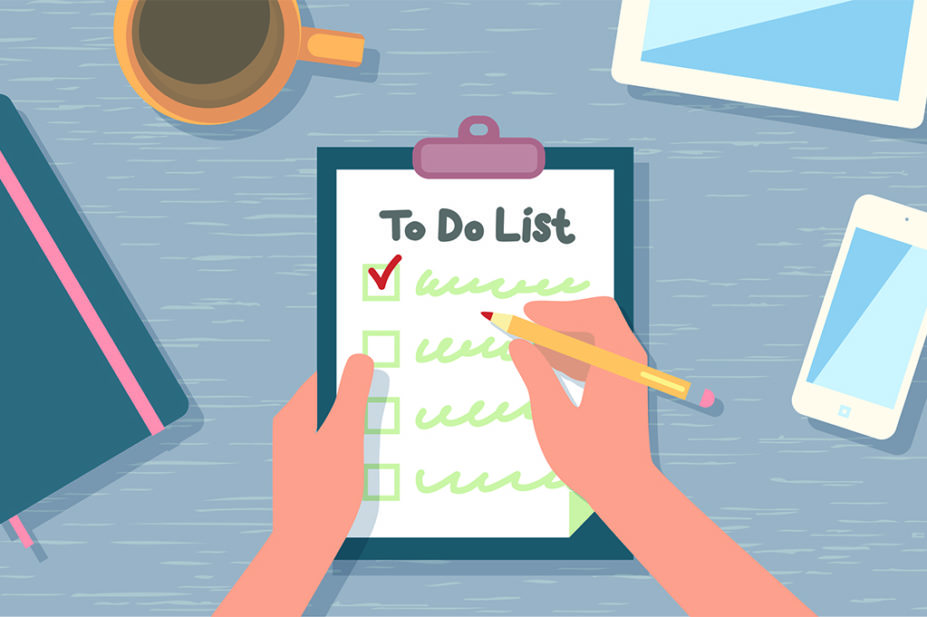
Shutterstock.com
I found little information other than courses from the Centre for Pharmacy Postgraduate Education (CPPE) to help facilitate my return to pharmacy after a career break. Therefore I have produced a ten-step guide for returning to the register. This should be able to be applied across all sectors.
Step 1 — Download and familiarise yourself with the guidance from the General Pharmaceutical Council on how to complete your portfolio, especially the pharmacist standards.
Step 2 — Join the Royal Pharmaceutical Society (RPS) if you are not already a member. There are reduced fees for people who are not working. The RPS has many members with a huge variety of experience and skills. By joining online groups you can ask questions and get advice. You will also have access to resources that will facilitate your journey back to the register, for example, guidelines on medicines that have changed from prescription-only to pharmacy, guidance on services such as cholesterol testing, responsible pharmacist guidance, “Medicines, ethics and practice”, discounts on the British National Formulary, webinars and updates.
Step 3 — Book yourself on a return to the register workshop provided by CPPE. The e-workshop is free and is just two evenings in a month from the comfort of your own home. You will also get an editable version of the GPhC self-assessment form, templates for the personal statement and personal development plan and a pdf of examples of evidences you could provide in the form. CPPE tutors run the courses and you can ask them many questions.
Step 4 — Complete online CPPE courses. Some courses are free and you can buy tokens for those that are not free.
Step 5 — Join the mailing list for the Pharmaceutical Services Negotiating Committee (PSNC). By doing this you will get regular updates and a monthly newsletter. The PSNC website is full of resources and if you have been off the register for a while this is a great place to get updated.
Step 6 — Brainstorm all the things you did while you were not on the register that can demonstrate any of the standards for pharmacists. Look for evidence you can provide to prove that you did that activity. For example, if you attended the RPS conference, you can use the ticket or a bag that states the dates of the conference. Another example is caring for a relative, which you could write a continuing professional development (CPD) entry for, or if you learnt to drive you could send in the marking sheet from your test.
Step 7 — Think back to when you were on the register. You need to think about examples that prove you applied the standards when you were practising. Then you should contact previous employers to provide a testimony to back your statements up. Registered pharmacists and technicians can provide also testimonies and character references. Try to get the testimonies on headed paper or, if this is not possible, a date stamp will be sufficient. If it was a while since you were last registered and you cannot get any testimonies from previous employers, see if they can write a letter confirming that you did work for the company.
Step 8 — Once you have started to assess how you currently meet the pharmacist standards, you may find there is a lot of work to do and, for people who have been off the register for a long time, this is normal. Once you have identified the work that needs to be done there is an option to put some of this forward to the “post-registration” period and include this in your personal development plan.
Step 9 — If you have been off the register for a while try to get some shadowing experience. In my experience this is quite hard. Many employers will think you can get involved with the pharmacy processes, which is not true. You can only observe and make notes. It is up to the responsible pharmacist to complete normal pharmacy activities while you are there.
Try to make the most of this experience by knowing the key areas you want to focus on, based on your self-assessment and advice from pharmacists already working in your chosen sector. The time spent shadowing should reflect how long you have been off the register. However, if you find you need less time, you should justify this in a cover letter.
The whole purpose of shadowing is to evaluate the process in the form of CPD and identify areas you may need extra time to study or support with. You can also get a testimony from the pharmacist whom you shadowed and even ask them to be a referee. He or she can attest to your attitudes, behaviour and skills which are part of the pharmacist standards and can confirm your observations while you were there. You may also pick up some “best practices” and thus say you will apply them when you return to practice.
Step 10 — complete the application form from the General Pharmaceutical Council. Once you have completed your portfolio you will need a countersignature from a registered pharmacist or pharmacy technician. This should be from a previous employer. However, you can ask the pharmacist whom you shadowed.
The things you have stated in the self-assessment framework should be included briefly in your CV and personal statement and then recorded in detail in the self-evaluation, including your examples from previous experience. The purpose of compiling a portfolio is to prove you are competent to return to the register on paper so the more information you provide the better.
Finally, if you struggle to obtain testimonials, or another part of your application, include a cover letter to explain why this is.


